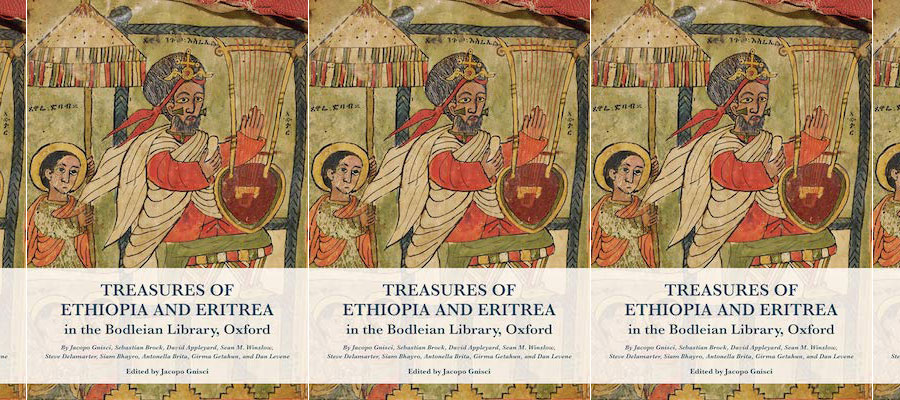Jacopo Gnisci, ed. Treasures of Ethiopia and Eritrea in the Bodleian Library, Oxford. Manar Al Athar, 2019.
From Manar Al Athar
In Ethiopia and Eritrea manuscripts, often beautifully illustrated, have been for centuries the principal means of recording not just the Scriptures but also historical information. Ethiopic manuscripts thus provide a unique window into the life and culture of Ethiopians and Eritreans up to the twenty-first century. The collection of Ethiopic manuscripts in the Bodleian Library in Oxford is one of the most significant in Europe. The Bodleian acquired its first Ge'ez manuscript in 1636 and further expanded its collection in 1843, when it acquired twenty-four of the manuscripts that the Scottish explorer James Bruce had brought back from Ethiopia and Eritrea. During the twentieth and twenty-first centuries the Bodleian Library has continued to expand its holdings of Ethiopic manuscripts through new acquisitions. Especially noteworthy are the forty-five manuscripts that the former Oxford University Medical Officer Bent Juel-Jensen bequeathed to the library at his death in 2007. The essays in this lavishly illustrated volume shed light on Ethiopia and Eritrea's fascinating past by looking at some of the most remarkable Ethiopic manuscripts kept at the Bodleian Library. The first three essays function as an introduction and examine the history of the collection, the classical Ethiopic (Ge'ez) language, and the production of manuscripts in Ethiopia and Eritrea. The remaining nine contributions - each devoted to one of the Bodleian's manuscripts - explore different facets of the manuscript tradition of Ethiopia and Eritrea. With its unique focus on the Bodleian's collection, this landmark volume presents a comprehensive and accessible overview of the context in which Ethiopic manuscripts were produced and makes the library's treasures more accessible to scholars and the interested public.
